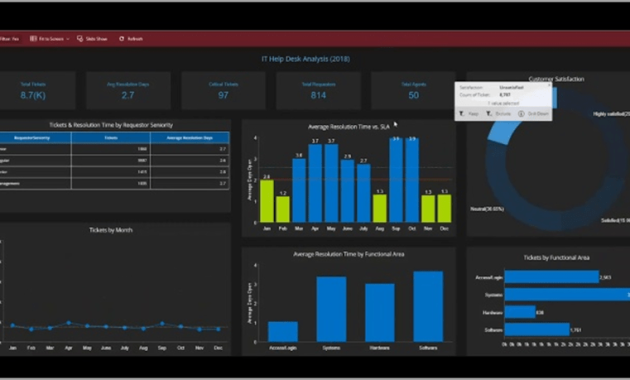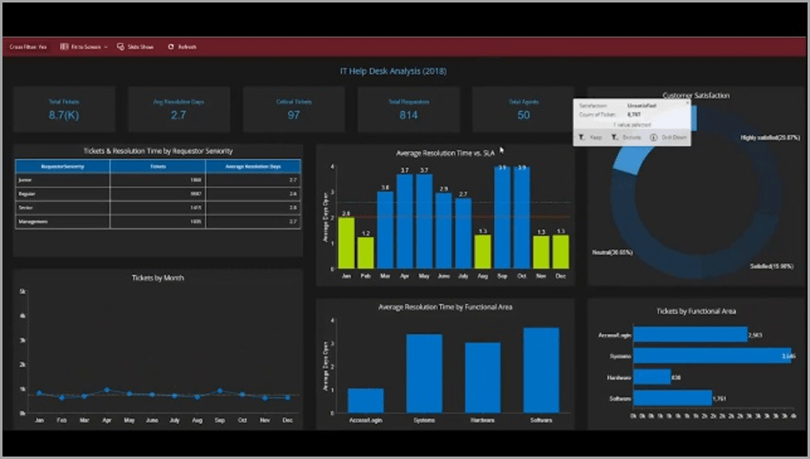
Business Intelligence Tools for Change Tracking: A Deep Dive into Monitoring Data Evolution
In the fast-paced world of data-driven decision-making, the ability to track changes in your business intelligence (BI) data is no longer a luxury, but a necessity. Understanding how your data evolves over time is crucial for identifying trends, diagnosing issues, and ensuring the accuracy and reliability of your reports and analyses. This is where business intelligence tools for change tracking come into play, providing a powerful means to monitor, analyze, and understand the shifts in your data landscape.
This article will explore the critical role of business intelligence tools for change tracking. We’ll delve into their benefits, key features, and the best tools available to help you gain a comprehensive understanding of your data’s evolution.
The Critical Importance of Change Tracking in Business Intelligence
Why is change tracking so important? The answer lies in the dynamic nature of data. Data is constantly being updated, modified, and added to. Without a system to monitor these changes, you risk:
- Inaccurate Reporting: Changes in underlying data can lead to flawed reports.
- Missed Trends: Failing to spot subtle shifts in data can result in missed opportunities.
- Difficulty in Troubleshooting: Identifying the root cause of data anomalies becomes challenging.
- Compromised Data Integrity: Unmonitored changes can erode the trustworthiness of your data.
Business intelligence tools for change tracking provide a solution by offering a systematic approach to monitoring data modifications. They allow you to trace the history of your data, identify who made changes, when they were made, and what those changes were. This level of detail is invaluable for maintaining data accuracy, ensuring compliance, and making informed decisions.
Key Features to Look for in Business Intelligence Tools for Change Tracking
When evaluating business intelligence tools for change tracking, several key features are essential. These features will help you gain the most value from your data monitoring efforts:
- Data Versioning: The ability to store multiple versions of your data. This allows you to revert to previous states and compare different versions.
- Audit Trails: Comprehensive logs of data changes, including the user, timestamp, and the specific modifications made.
- Change Alerts and Notifications: Real-time alerts when predefined changes occur, allowing for immediate action.
- Data Lineage Tracking: Understanding the origin and flow of data through your systems.
- Data Comparison: Tools to easily compare different versions of data and highlight the differences.
- Role-Based Access Control: Ensuring that only authorized users can access and modify data.
- Integration Capabilities: Seamless integration with your existing data sources and BI platforms.
Choosing a tool with these features will significantly improve your ability to track and understand changes in your data. It empowers you to maintain data integrity and make more informed decisions.
Top Business Intelligence Tools for Change Tracking
Several business intelligence tools excel at change tracking. Here are some of the leading options, each with unique strengths:
Tableau
Tableau is a widely used BI platform known for its data visualization capabilities. It offers robust change tracking features, including data versioning and audit trails. Tableau’s user-friendly interface makes it easy to visualize data changes and identify trends. Its strong data connectivity is a significant advantage. [See also: Tableau vs Power BI: Choosing the Right BI Tool]
Microsoft Power BI
Power BI is another industry leader, offering comprehensive change tracking features. It integrates seamlessly with other Microsoft products. Power BI provides data lineage tracking and change alerts. Its robust reporting and analytical capabilities are well-suited for change tracking.
Looker (Now part of Google Cloud)
Looker is a powerful BI platform known for its data modeling capabilities. It offers sophisticated change tracking features, including data versioning and audit logs. Looker’s emphasis on data governance makes it a strong choice for organizations that prioritize data integrity. [See also: Data Governance Best Practices for BI]
Qlik Sense
Qlik Sense is a self-service BI platform with strong change tracking capabilities. It offers data lineage tracking and change alerts. Qlik Sense’s associative engine helps users explore data and identify relationships. This is beneficial for change analysis.
Sisense
Sisense is a BI platform focused on ease of use. It provides change tracking features, including data versioning and audit trails. Sisense’s emphasis on speed and agility makes it suitable for organizations that need to quickly analyze data changes.
Implementing Change Tracking: Best Practices
Implementing effective change tracking requires more than just selecting the right tool. Here are some best practices to follow:
- Define Clear Objectives: Determine what data you need to track and why. Set specific goals for your change tracking efforts.
- Establish Data Governance Policies: Implement clear policies for data access, modification, and versioning.
- Choose the Right Tool: Select a BI tool that aligns with your specific needs and requirements.
- Configure Alerts and Notifications: Set up alerts to notify you of critical data changes.
- Regularly Review and Analyze Data Changes: Make change tracking a part of your regular data analysis process.
- Train Your Team: Ensure that your team understands how to use the change tracking tools and interpret the results.
- Document Your Processes: Document your change tracking processes for future reference and training.
By following these best practices, you can maximize the effectiveness of your business intelligence tools for change tracking and gain valuable insights from your data.
The Benefits of Change Tracking: Beyond the Basics
The advantages of utilizing business intelligence tools for change tracking extend far beyond basic data monitoring. They can significantly impact various aspects of your business:
- Improved Data Accuracy: By monitoring changes, you can quickly identify and correct data errors.
- Enhanced Data Quality: Change tracking helps maintain data integrity and consistency.
- Better Decision-Making: A clear understanding of data evolution leads to more informed decisions.
- Increased Efficiency: Change tracking can streamline data analysis and reporting processes.
- Enhanced Compliance: Meeting regulatory requirements becomes easier with detailed audit trails.
- Reduced Risk: Proactive change monitoring helps mitigate potential risks associated with data inaccuracies.
Investing in effective change tracking is an investment in your data’s value. It provides a foundation for reliable reporting, accurate analysis, and sound decision-making.
Change Tracking and Data Governance: A Synergistic Relationship
Business intelligence tools for change tracking play a crucial role in data governance. They provide the necessary mechanisms to enforce data governance policies. Audit trails and data versioning are essential for maintaining data integrity. They provide a clear history of all data changes. This helps in ensuring data accuracy and compliance. Change tracking tools enable you to monitor data access. This helps in controlling data modifications. They also assist in identifying data quality issues. Data lineage tracking can help you understand the data’s origin. It also shows how it flows through your systems. This is crucial for troubleshooting and root cause analysis. Therefore, effective change tracking is a cornerstone of sound data governance. It ensures that your data is accurate, reliable, and trustworthy. [See also: Data Governance Framework: A Comprehensive Guide]
The Future of Change Tracking in Business Intelligence
The field of business intelligence tools for change tracking is constantly evolving. We can expect to see several trends in the coming years:
- Increased Automation: Automation will play a more significant role in change detection and analysis.
- Advanced Analytics: Machine learning and AI will be used to identify patterns in data changes.
- Enhanced Data Visualization: Visualizations will become more sophisticated, providing deeper insights.
- Improved Integration: Tools will integrate more seamlessly with various data sources and platforms.
- Focus on Real-time Monitoring: Real-time change detection will become even more critical.
These trends will further enhance the capabilities of business intelligence tools for change tracking. They will empower organizations to gain even deeper insights into their data. This is crucial for making informed decisions and staying ahead of the competition. The future of change tracking promises to be even more dynamic and insightful.
Conclusion: Embracing Change Tracking for Data-Driven Success
In conclusion, business intelligence tools for change tracking are essential for any organization that relies on data. They provide the means to monitor data evolution, ensure data accuracy, and make informed decisions. By selecting the right tools, implementing best practices, and embracing the future trends, you can unlock the full potential of your data. This will ultimately drive your business towards data-driven success. The ability to track and understand data changes is a key competitive advantage in today’s data-rich environment. Don’t underestimate the power of change tracking.

